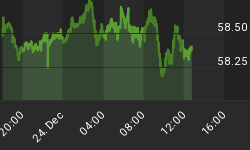Over the past several weeks, stories have emerged regarding potential fraud by big banks foreclosing on homes. The pressure of these charges was such that several banks went so far as to declare a freeze on foreclosures, despite President Obama's apparently disapproval.
The question being raised now is whether these developments will prove to be the final nail in the proverbial coffin of big Wall Street banks.
After more than a decade of poor policy decisions ranging from lax lending practices to the creation of new, exotic but misunderstood securities, it seems the bill has finally come due for big banks. With the blow-up and a great deal of the ensuing fall-out having been crammed into just a few short, terrible years, many of the world's most prominent financial institutions are seeing their empires of influence, as well as their financial resources, dwindle by the day.
[Note: The banks being referred to are not community banks or regional commercial banks, but prominent Wall Street investment banks and mortgage lenders.]
Those who have the painful events of the last several years seared into their memories will recall that the first domino to fall in this great collapse was in the derivatives markets (e.g. interest rates swaps, Credit-Default Swaps, etc.). Suddenly investors in this relatively new, unregulated market that had been growing exponentially for several years, found out the hard way that the 'securities' they were trading would not necessarily behave the way they had hoped or planned - or how they had been told.
Now, just as the derivatives mess seems to have been winding down, there is more trouble surfacing; and it seems to be related.
It now appears that big Wall Street banks have not only been hoaxing investors in recently created derivatives markets; they've also been defrauding clients in more traditional banking practices, from nearly every angle.
Back in the 1970s lenders who wanted to get loans off their books and gather more capital to lend began working through investment banks using a new process known as securitization to bundle up loans (a great deal of them being home mortgages) and sell them to investors, who would receive the monthly payments as they came in.
For a while this worked wonderfully, and helped to fuel economic growth as lenders finally found access to more capital. However, this also created a conflict of interest because these lenders suddenly found that they had no reason to make safe, reliable loans. They were just going to sell them to investors anyway, so they had no reason to care whether the loan would ever be paid back.
Unfortunately, not realizing this conflict of interest, hapless investors continued to expand the market for mortgage-backed securities. Many of the investors in these new securities were big pension funds, insurance companies, and other large institutions, which are usually very focused on safety.
Thanks to inadequate regulation in this new market, many debt-backed securities were marketed as extremely safe investments, nearly as safe as government debt. As we have learned since 2008, and are now being reminded, this was far from the truth.
The banks didn't stop there. There's a second side to the securitization equation that was just as open to deception.
Thanks to all the new capital available to banks since the advent of securitization, there were plenty of loans to go around, but few qualified lenders. As a result, the banks eased up their lending practices even further, in some cases even making what could be considered predatory loans (loans they could reasonably assume would never be repaid).
With many of these unqualified lenders having defaulted on their loans, many banks have had the messy job of foreclosing on homes. Here is where the most recent controversy has occurred.
It seems that many banks, in an effort to process loan and foreclosure documents speedily, may have acted outside the law by manufacturing documents, in some cases even falsifying client signatures or inventing liens on properties that were paid for in cash.
The result of this final development, once events finally play out, is that many people will likely stay away from big bankers; both for loans and for structured investments. Investors will likely clear out of the mortgage-backed debt market, and as a result of decreased demand securitization will likely slow to a snail's pace. A much larger portion of loans made will be kept on banks' books. This will mean tighter lending practices as banks have more motivation to make sure that the loans they make will be repaid.
In general, over the next several years we're likely going to see a shift back toward community and regional banks as Wall Street banks fall from grace. Some larger banks - both lenders and investment banks that securitized loans - will probably be indicted; lenders for falsifying documents, investment banks for misrepresenting mortgage-backed securities.
Lately one idea that has been floated around to help solve this mess of bad debt is the use of an entity similar to Resolution Trust Corporation (RTC), which was used to help unwind the Savings and Loan Crisis in the 1980s and '90s.
Though this is certainly a possibility, it's important to remember that circumstances today are vastly different from the S&L Crisis 20 years ago. Back then securitization wasn't as popular, so a good deal of the bad debt was still held by the banks in crisis and was easy for the government to gather through RTC. Thanks to rampant securitization of loans since then, the debt now going bad has been spread around the globe.
The crisis facing banks today is one founded on bad debt but intensified by a lack of a confidence and trust. It will undoubtedly be unwound over time; the question is which banks will still be around to see its end.
















